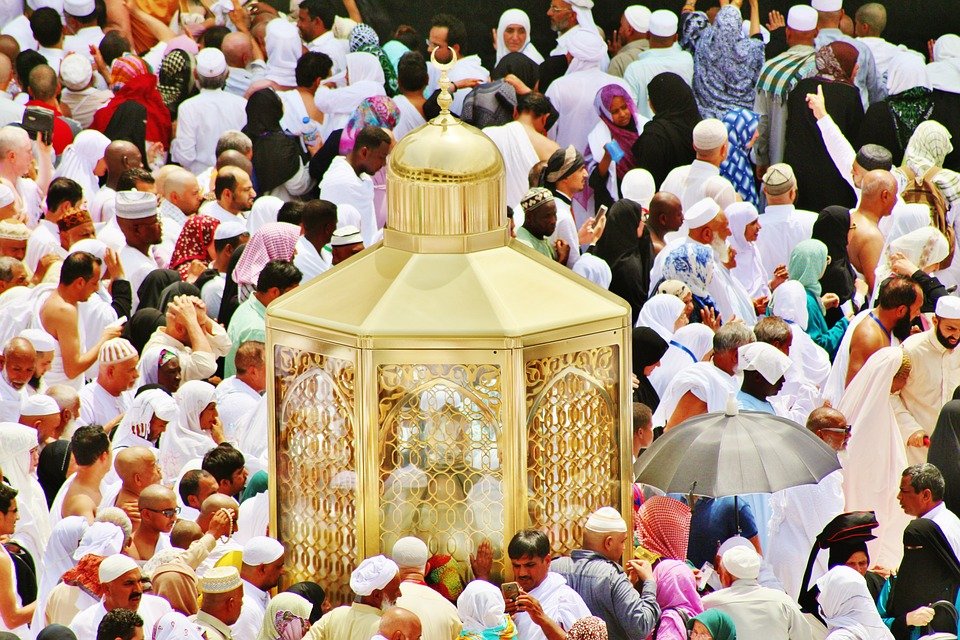You are here to read: How Different Schools of Thought Do Hajj: A Comprehensive Guide – A Thoughtfully Written Guide Offering Spiritual Wisdom and Travel Advice for Every Pilgrim who is going on holy journey of Hajj or Umrah.
When it comes to the topic of how different schools of thought do Hajj, I realize that many Muslims may have questions and seek guidance. This annual pilgrimage holds profound significance, and diverse interpretations and practices shape the way individuals approach it. In this article, I promise to provide you with a comprehensive guide that covers how different schools of thought do Hajj. Whether you’re preparing for your first pilgrimage or simply seeking to understand the variations in practices, this article aims to equip you with the knowledge you need.
I feel it’s essential to recognize the importance and significance of understanding how different schools of thought do Hajj. Each community’s unique perspectives can enhance our collective experience and deepen our faith. With our expertise at Airlink Hajj and Umrah, which has served the Makkah and Madinah travel field since 2016, we strive to share insights that cater to all Muslims. In my opinion, the diversity in practice enriches our understanding of this holy pilgrimage, and I’m excited to guide you through it in this detailed exploration.
How Different Schools of Thought Do Hajj: A Comprehensive Guide
Understanding the Essence of Hajj
Hajj is not just a trip; it’s a significant spiritual endeavor. Millions of Muslims worldwide prepare themselves for this pilgrimage to Makkah, seeking spiritual fulfillment and community connection. The journey is steeped in tradition and deeply rooted beliefs. For those participating, it represents a chance to renew faith and ask for forgiveness. I believe this opportunity brings people closer to their roots while fostering a sense of unity among diverse cultures.
Different schools of thought emphasize various practices during Hajj. They interpret Islamic texts differently, leading to unique customs. Understanding these variations helps us appreciate the rich tapestry of beliefs that contribute to the Islamic faith. In my view, this diversity adds beauty to the experience, allowing pilgrims to find their own paths while adhering to the core principles of Islam.
The Sunni Perspective
The Sunni school of thought is the largest branch of Islam. Sunnis follow the Sunnah, the traditions and practices of the Prophet Muhammad. This school emphasizes five key pillars, and Hajj stands as a central one. For Sunnis, performing Hajj is an obligation for those who are physically and financially able.
During Hajj, Sunnis focus on rituals like Tawaf, which involves circling the Kaaba seven times. Pilgrims engage in prayer and reflection, fostering a personal connection with their faith. I find that this process feels deeply rewarding, as it encourages mindfulness and spirituality. The unity felt among pilgrims as they perform these rituals often creates lasting bonds, transcending language and culture.
The Shia Perspective
Shia Islam represents another vital perspective on Hajj. While Shia Muslims also adhere to the core rituals, they place additional emphasis on the historical significance of certain sites. For instance, Shia pilgrims often visit the tombs of important figures, such as Imam Ali and Imam Hussein. This practice enriches their experience, allowing them to connect with their lineage and history.
You're at the middle of this awesome post at AirlinkHajjandUmrah.com through: How Different Schools of Thought Do Hajj: A Comprehensive Guide. Keep reading, it gets better!
In my opinion, the inclusion of these visits adds depth to the Hajj experience for Shia Muslims. They seek not only spiritual elevation but also a sense of belonging to their community’s history. The reflective practices they undertake instill a profound reverence for their beliefs. This multifaceted approach brings a unique flavor to the pilgrimage, inviting pilgrims to cherish their heritage.
Differences in Rituals
While both Sunni and Shia pilgrims participate in the same basic rituals, differences exist in their execution. Shia Muslims may engage in a practice known as "Ziyarat," which involves visiting the graves of holy figures. This additional aspect of their pilgrimage emphasizes both devotion and historical context. In my experience, understanding these differences enhances appreciation for the diversity within the Islamic faith.
Moreover, the way prayers are conducted can vary between the two schools. Sunnis typically pray in congregation, while Shias may pray individually or in smaller groups. This distinction reflects deeper theological beliefs and encourages different spiritual practices. I think this diversity enriches the overall experience of Hajj, allowing everyone to internalize the journey in their own unique way.
Common Goals
Despite the differences in practice, one sees common goals unifying all pilgrims. The aim of seeking forgiveness and spiritual renewal lies at the heart of Hajj. Both Sunni and Shia Muslims embark on this journey with similar intentions. They hope to return home transformed, having reconnecting with their faith.
In my view, the shared goals of Hajj serve as a reminder of the common threads tying diverse communities together. As pilgrims gather in Makkah, it’s heartwarming to see individuals from various backgrounds united in purpose. The act of walking together, praying, and reflecting cultivates a sense of solidarity that transcends geographical and cultural boundaries.
The Role of Knowledge
Knowledge plays a vital role during Hajj for pilgrims from different schools of thought. Understanding the various rituals, their meanings, and historical significance enriches the experience. Many pilgrims attend lectures or read materials to prepare themselves for what lies ahead. I believe this preparation enhances their understanding, making the journey more meaningful.
Some scholars specifically focus on teaching the significance of Hajj from each school’s perspective. They emphasize the importance of personal reflection and understanding the complexities of faith. In my opinion, this pursuit of knowledge contributes to a deeper appreciation of the journey and equips pilgrims with invaluable insights as they navigate their spiritual path.
The Power of Unity
Ultimately, Hajj serves as a testament to the power of unity among Muslims. Regardless of the schools of thought, pilgrims gather from all corners of the globe. This sense of kinship fosters an environment of peace, love, and respect. I feel that witnessing people of diverse backgrounds united in faith is nothing short of inspiring.
As pilgrims complete this sacred duty, they return home carrying the lessons learned and the bonds formed. Hajj allows us to step beyond worldly differences and focus on what truly matters: our faith, our connection to God, and our shared humanity. Together, we can celebrate these differences, learning from one another and collectively enriching our faith and communities.
That wraps up How Different Schools of Thought Do Hajj: A Comprehensive Guide. Thanks for sticking with us till here! Share this: How Different Schools of Thought Do Hajj: A Comprehensive Guide with your friends.
Check our homepage at Air Link Hajj & Umrah for more awesome updates.
Some interesting posts are: 1: Umrah Mubarak, 2: When is Umrah closed 2026?, 3: When does Umrah start after Hajj 2026?
Mushu, an experienced Saudi Arabia traveler and writer, shares insightful tips and spiritual reflections to enhance Hajj and Umrah journeys for fellow pilgrims. He has been to Makkah and Madina from 2016 to 2023 many times and his posts will reflect this.







